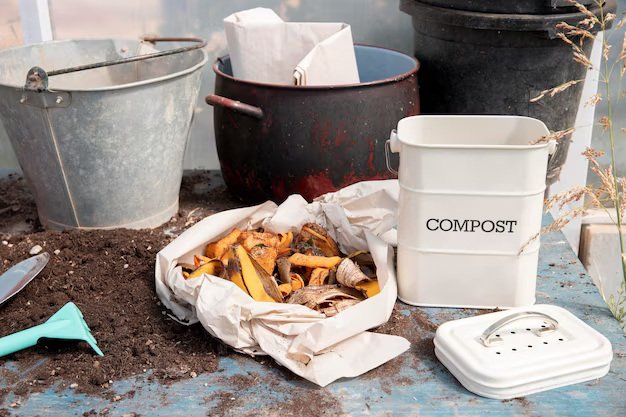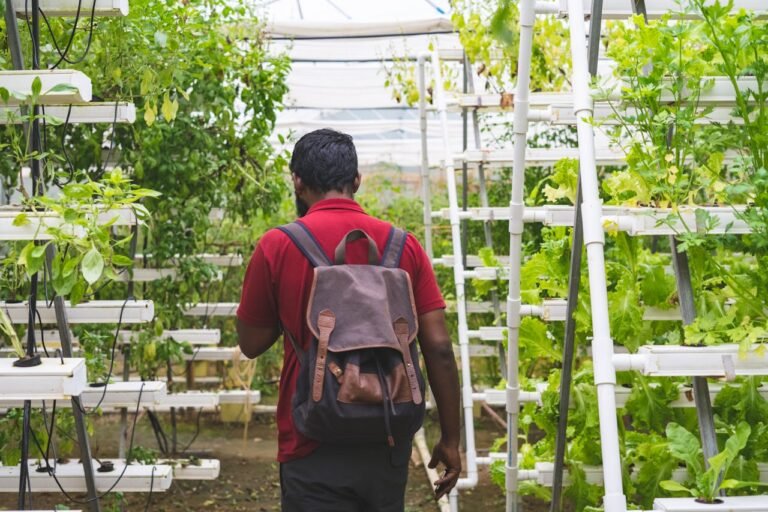Organic Farming Methods for Vegetable Gardens
Organic vegetable gardening has gained ground globally, moving beyond theory into inspiring real‑world examples. In India, Kaushil Patel—a former drug analyst turned natural farmer—has revived over a hundred heirloom vegetable varieties on his 25‑acre farm in Gujarat. Since 2019, he’s grown vibrant native crops like black carrots, red okra, purple tomatoes, and blue turmeric using cow‑based natural farming methods. His seed bank now holds 130 tomato and 40 brinjal varieties. Patel achieves about 15 tonnes per acre and supplies major cities under his brand “Gaubharat” while earning awards for sustainability and heritage preservation.
In the UK, Charles Dowding, known as the “Guru of No‑Dig”, practices an organic, no‑dig system on his market garden in Somerset. Without ploughing, synthetic fertilisers, or pesticides, he uses thick mulch layers and compost made from pesticide‑free manure. He produces roughly 100 kg of vegetables from just 10 m², and generates what in 2020 would be worth over £20,000 annually. Dowding’s work demonstrates how minimal soil disturbance encourages microbial and fungal communities that retain moisture, resist erosion, and foster nutrient cycling.
These two stories illustrate real, sustainable organic methods in action—one rooted in traditional seed preservation, the other in ecological soil management.

Research Insights and Trends in Soil Health and Biodiversity
Scientific literature increasingly validates what organic gardeners observe: improved soil carbon, biodiversity, and long‑term resilience. A 2024 global review published in a peer‑reviewed journal found that organic methods significantly enhance soil organic carbon and microbial diversity through practices like cover cropping and composting.
Another review comparing different agricultural practices noted that practices such as cover cropping and conservation tillage boost soil carbon storage, improve structure, and support microbial life by reducing disturbance and encouraging root exudates and mycorrhizal networks. A meta‑analysis over 50 years of diversified, organic, and intercropped systems reported up to 2823% increase in profitability, biodiversity, and soil health follow‑up benefits after twenty years, even with yields similar to conventional farms.
Sensory testing from 2024, involving over 950 consumers, revealed that vegetables grown under no‑till and organic systems were often preferred in taste and texture compared with conventional produce, with statistically significant differences (p < 0.05). Taken together, these findings reinforce how organic methods not only sustain yields but also deliver better ecological outcomes and consumer satisfaction.
Practical Methods That Real Gardeners Use
Everyday organic gardeners rely on accessible techniques that align with ecological principles.
Composting kitchen scraps with yard waste remains foundational. Expert gardener Gary Pilarchik recommends starting a compost pile before anything else: Homemade compost adds nutrients, improves texture, and reduces cost compared to commercial fertilisers. He often uses cardboard mulches topped with leaves or grass clippings to suppress weeds and welcome soil organisms over winter.
Mulching is widely emphasised as essential. Laura Janney, a gardening expert at The Inspired Garden, advises a 2–4‑inch organic mulch layer to retain moisture, suppress weeds, and regulate soil temperature—but warns that heavy mulch during cold weather can delay soil warming.
Companion planting, crop rotation, and selecting region‑adapted cultivars and organic seeds contribute to pest and disease control. A study in Oyo State, Nigeria, found that most farmers rated health benefits from organic vegetable farming highest, followed by economic and environmental benefits, based on their own experiences.
No‑dig planting, promoted by Dowding, uses minimal soil disturbance and relies heavily on compost and mulch layers. He argues that this preserves the soil’s living web—fungi, insects, microbes—leading to healthier plants and less erosion.
Some gardeners explore alternative approaches like Masanobu Fukuoka’s “natural farming,” which omits ploughing, prepared compost, weeding, and artificial fertilisers altogether, instead leveraging minimal disturbance, clay seed balls, and natural ecosystem resilience. Although extreme, it highlights the potential of letting ecosystem processes lead.
Tables like the one below help summarise soil and biodiversity outcomes from different methods:
| Practice | Soil Organic Carbon ↑ | Biodiversity ↑ | Yield Sustainability | Sensory Preference |
|---|---|---|---|---|
| Cover Cropping | High | High | Comparable | — |
| No‑Dig / Conservation | High | High | Comparable | Preferred |
| Organic Amendments | Moderate–High | Moderate–High | Maintained | — |
| Traditional Natural (Fukuoka) | Moderate | High | Variable | — |
This captures findings from multiple studies, such as those mentioned throughout this article.

How to Build Your Own Organic Vegetable Garden: Advice from Experience
If you’re starting or converting a vegetable garden to organic methods, here’s a practical approach grounded in real gardening experience and research.
First, assess your sun exposure and soil condition—most vegetables need 6–8 hours of sun and well‑drained, nutrient‑rich soil. Experts recommend raised beds or containers to control soil quality and drainage easily.
Begin composting immediately: collect kitchen scraps, eggshells, yard litter, and build aerobic piles. Compost improves fertility, structure, microbial life, and cuts fertiliser costs. Extend the benefit by laying cardboard across vacant beds and covering it with mulch to suppress weeds and feed soil organisms through decomposition.
Implement crop rotation and companion planting to reduce pest pressure and maintain soil fertility. For instance, planting nitrogen‑fixing legumes (like beans or peas) followed by heavy feeders such as tomatoes reduces nutrient depletion and interrupts disease cycles.
Adopt no‑dig or minimal tillage, especially if you already have good compost and mulch systems. Working the soil less preserves structure and life. If you follow Dowding’s method—layering compost and mulch and avoiding disturbance—you’ll support soil microbial networks and reduce erosion risk.
For pest and weed control, rely on integrated approaches: hand‑weeding, light cultivation, neem oil sprays, and attraction of beneficial insects like ladybugs and lacewings. Avoid synthetic chemicals entirely. Specialists urge using organic insecticidal soap, beneficial insect release, and copper‑based fungicides when needed, always as a last resort.
Track what works in your garden: sprinkle applications using homemade weed suppressants (e.g. vinegar), note pest appearances, anticipate seasons—Pilarchik advises spraying early, two weeks before pests historically arrive, based on your notes.
Finally, prioritise diversity—plant many vegetable types, herbs, and flowering plants. Ecological diversification increases long‑term profitability, biodiversity, and resilience, as meta-analyses over decades have found.
Conclusion: Four Steps to Thriving Organic Vegetables
Every garden—and every gardener—is unique. But the experiences of practitioners like Kaushil Patel and Charles Dowding, backed by global research, point to key principles:
- Feed the soil through compost, cover crops, and organic amendments.
- Work minimally with no‑dig or low‑till practices to preserve soil life.
- Diversify plantings and rotations to enhance resilience, reduce pest cycles, and boost biodiversity.
- Know your garden—observe sun, soil, pests, and yields; adapt with compost, mulch, companion planting, and notes that guide the timing of interventions.
By following these evidence‑based and real‑world grounded steps, you’ll cultivate a garden that not only produces healthy and flavorful vegetables but also nourishes the soil, supports beneficial creatures, and becomes resilient in the face of climate shifts.







